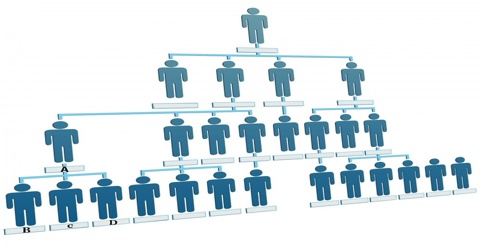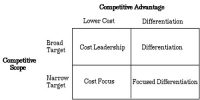Disadvantages of Horizontal Communication
Though horizontal communication is essential for the smooth functioning of an organization, it is not completely free from defects or flaws. Followings are the possible drawbacks of horizontal communication:
- Hostile / Rivaling attitude:
Horizontal communication occurs between the people at the same rank and position. If there exists any aggression or competition between them, they will not swap information impulsively. Rivalry within organizations occurs for example when the different levels of an organization fail to collaborate with one another. Moreover, they will conceal their information intentionally to deprive someone of the real news.
- Intradepartmental conflict:
The success of horizontal communication depends on a good relationship between sends and receiver. If there is any conflict, distrust or suspicion between them, horizontal communication will be ineffective. By passing the vertical channel horizontal communication allows the employees to communicate liberally but sometimes it leads to personal conflict.
- Overspecialization:
Specialization can happen with actions or vocabulary used by dissimilar departments. If various departments of an organization are highly specialized, the people of the individual department may think that they need not communicate with other departments. This creates hindrance in the way of horizontal communication. When this occurs organizations have problem functioning correctly and do not run naturally.
- A discouraging attitude of top management:
In some cases, top managers discourage horizontal communication thinking that workers may become friendly with one another and may create a threat for the management. For lack of understanding among employees, this communication may not be successful.
- Ignoring vertical communication:
In horizontal communication similar level of organizational members are contacted or exchange information with each other. More concentration on horizontal communication may work as a substitute for upward and domed communication. In that case, upward and downward communications are ignored. Most of the cases they do not notify managers of the hierarchy which break down or overlook the vertical communication.
- Low productivity:
This communication often fails merely because of organizational members are unenthusiastic to disburse the further effort that it requires and its wastage useful and expensive time of superiors which lead to low productivity.
- Lack of discipline:
As strict rules are not followed organizational regulation also can be vulnerable in horizontal communication. It takes place between equivalent position staffs. So damn-care character is probable to be encouraged because of uncertain channels and rules of communication.
- Wastage of time:
Such communication involves unnecessary categorization of data which can destroy the functional and important time of superiors. Communication in addition to vertical instruction may hindrance the execution of a decision.
- Lack of motivation:
Horizontal communication often fails basically for the reason that organization members are disinclined to disburse the additional effort that it requires. It may require contact with people in units and the channels and rules of communication may be imprecise. Sometimes we do not truly know these people. The need to communicate with them makes us troubled or takes too much time.
At last, we can say that the above-stated factors can diminish the utility of horizontal communication. So the person’s concentration should be well aware of those factors when they communicate horizontally.
















